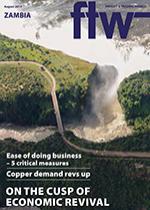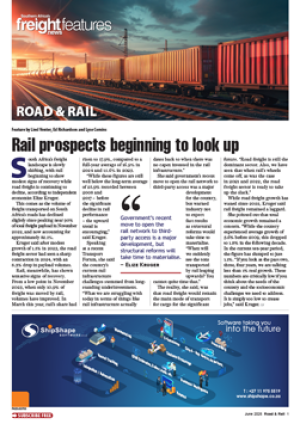Competition between haulage operators has driven down costs and improved efficiencies to make the Lusaka-Johannesburg route one of the most competitive of the regional corridors serving Zambia, according to a recently published study on intra-regional transport by Thando Vilakazi and Anthea Paelo of the Centre for Competition, Regulation and Economic Development (CCRED).
“Our key findings are that certain routes, notably that between Lusaka and Johannesburg, have become more competitive over time, with prices declining for both outbound and inbound legs.
“This relates to the availability of loads in each direction, improved efficiency and regulation of border processes, and rivalry between South African, Zambian, and Zimbabwean trucking firms, though delays account for a significant proportion of both costs and prices charged and are a key area for intervention,” the authors state.
Zambian truckers are at a disadvantage because fuel is taxed at 80% of the selling price. Retail diesel averages around R15.90 a litre in Zambia, compared to around R10.82 in Namibia and Mozambique and R10.98 in South Africa.
The cost of fuel and tyres accounts for about 90% of variable costs in southern Africa, according to the study. Competition in Zambia has grown following key changes in the regulations relating to transportation, resulting in greater efficiency and rivalry, according to a 2015 study on competition in the SADC road freight sector by Thando Vilakazi, Phumzile Ncube and Simon Roberts.
The removal of duties on the importation of secondhand vehicles in 2008/9 led to an influx of new trucking companies, and the simplification of processes for obtaining licences and permits. This contributed to an increase in cross-border transportation and in competition between cross-border transport operators. In terms of the route from South Africa, via Zimbabwe, to Zambia, the introduction of a one-stop border post at Chirundu (between Zambia and Zimbabwe) in 2009 has led to increased efficiencies.
There are, however, still delays at the Beitbridge border (between Zimbabwe and South Africa), due in part to high traffic volumes.
“Importantly, competition from trucking companies from South Africa and Zimbabwe has led to an improvement in the efficiency and cost competitiveness of Zambian transporters.
“However, in the domestic market in Zambia there is a highcost environment driven in part by high fuel costs,” state Vilakazi and Paelo.


